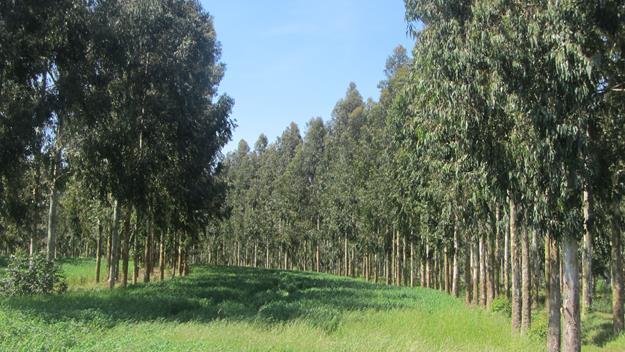All year round, IUFRO (www.iufro.org) scientists hold or participate in meetings to present results and exchange knowledge in all fields of research related to forests. Quite recently, only a short time before the Global Landscapes Forum in mid-November on the sidelines of the Warsaw Climate Change Conference, IUFRO scientists were again discussing issues of great relevance to this upcoming event, namely at the:
1st International Symposium on Afforestation of Pastures in Subtropical Regions
More than 150 participants including exhibitors, researchers and producers attended this symposium, which was organized from 8-10 October, 2013 in Curitiba, Brazil by EMBRAPA, and co-sponsored by various national and international organizations including IUFRO through its Research Group on Agroforestry.
As is widely acknowledged, afforestation and agroforestry, among other things, play a significant role in maintaining or even enhancing the supply of ecosystem services in agricultural landscapes, particularly water, soil health and carbon sequestration. And, as Dr Alvaro Sotomayor (Forest Institute of Chile INFOR; IUFRO) stresses in his opening address of the symposium, “afforestation, in addition to providing wood, makes important contributions to climate change mitigation, to the protection of the environment, crops and animals, and to the provision of food for people.”
Thus, there was wide agreement among participants on the need to promote afforestation, agroforestry and other alternatives that will ensure the sustainability of natural resources in the face of climate change.
Large variations between high and low temperatures, which lead to either frost or drought, and the lack of rainfall that has caused droughts in some regions of Latin America lately, are severely affecting agricultural areas. Problems with frost, for example, caused great losses to farmers only a couple of weeks ago in southern Brazil, northern Argentina and in the central zone of Chile. And the droughts that occurred in recent years in areas of Chile exacerbated the problem of water scarcity and affected crops and rural populations. Here afforestation and agroforestry can help farmers to adapt to climate change. Therefore, it is imperative to create incentives for afforestation and the introduction of trees in the fields through agroforestry systems, and for the implementation of extension mechanisms and technical assistance to the population.
Among the key questions that were consequently addressed at the symposium were the following:
- What effects does climate change have on trees, crops and animals?
- What are the challenges and opportunities of afforestation in grasslands?
- Which species are suited for use in silvopastoral systems in areas of frost?
- How can extension and technical assistance reach out to landowners interested in planting trees on pastures?
In the course of the symposium, participants could visit various sites to learn from the experience gained with silvopastoral systems using different species of Eucalyptus sp., in combination with crops such as oats, and various forage species. In addition, EMBRAPA researchers talked about their research on the effect of silvopastoral systems in carbon sequestration, and reducing erosion.
For a full report in English and Spanish and further information on IUFRO’s Agroforestry Research Group, including the upcoming conference on “Women in Agroforestry” on 28-29 November 2013 in Kathmandu, Nepal, please visit: http://www.iufro.org/science/divisions/division-1/10000/10400/activities/
Information provided by Dr Alvaro Sotomayor (Forest Institute of Chile INFOR and IUFRO)
Published and edited by IUFRO (International Union of Forest Research Organizations).


Leave a Reply